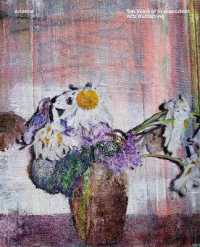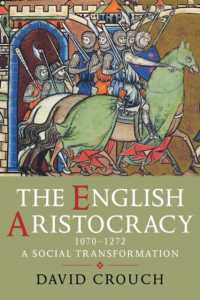- ホーム
- > 洋書
- > 英文書
- > History / World
Full Description
Archaeologists study a wide array of material remains to propose conclusions about non-material aspects of culture. The intricacies of these findings have increased over recent decades, but only limited attention has been paid to what the archaeological record can tell us about the transfer of cultural knowledge through apprenticeship. Apprenticeship is broadly defined as the transmission of culture through a formal or informal teacher-pupil relationship. This collection invites a wide discussion, citing case studies from all over the world and yet focuses the scholarship into a concise set of contributions. The chapters in this volume demonstrate how archaeology can benefit greatly from the understanding of the social dimensions of knowledge transfer. This book also examines apprenticeship in archaeology against a backdrop of sociological and cognitive psychology literature, to enrich the understanding of the relationship between material remains and enculturation. Each of the authors in this collection looks specifically at how material remains can reveal several specific aspects of ancient cultures: What is the human potential for learning? How do people learn? Who is teaching? Why are they learning? What are the results of such learning? How do we recognize knowledge transfer in the archaeological record? These fundamental questions are featured in various forms in all chapters of the book. With case studies from the American Southwest, Alaska, Egypt, Ancient Greece, and Mesopotamia, this book will have broad appeal for scholars - particularly those concerned with cultural transmission and traditions of learning and education - all over the world.








